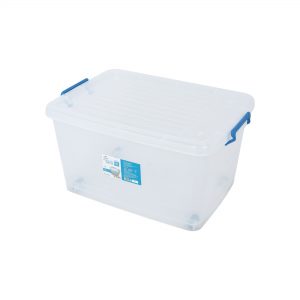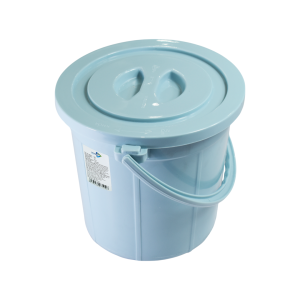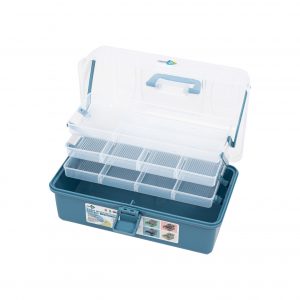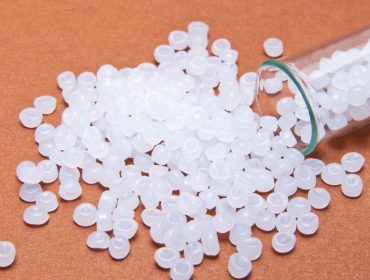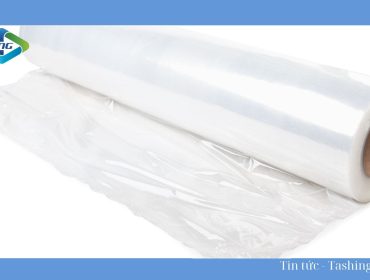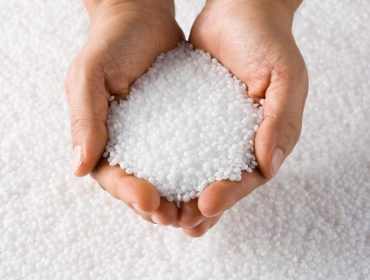Overview of Injection Molding: History, Process, and Applications
25/03/2025Injection molding, also known as plastic molding, is one of today’s most advanced manufacturing technologies, playing a crucial role in producing precise, durable, and diverse plastic products. From small components in electronic devices to large industrial parts, injection molding has become the preferred choice due to its high efficiency and flexibility. In this article, we will explore the history, operating process, mold structure, benefits, and commonly used materials in injection molding.
History and Development of Injection Molding
Injection molding technology originated in the late 19th century, marking a significant milestone in the plastic manufacturing industry. In 1872, American inventors John Wesley Hyatt and his brother Jeremiah developed the first injection molding machine, which used a piston to inject molten celluloid into a mold, producing simple items such as buttons and combs. Although primitive, this invention paved the way for the development of the modern plastics industry.
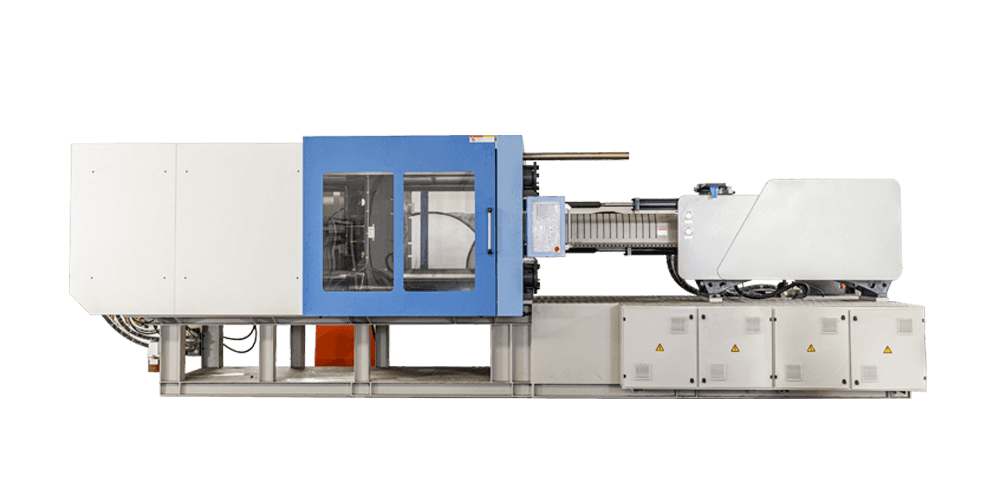
By the 1940s, James Watson Hendry revolutionized the technology with the invention of the screw injection molding machine, which allowed for better mixing and more precise injection of plastic. This advancement significantly improved production speed and product quality. Subsequent innovations, such as gas-assisted injection molding in the 1970s and cost-effective aluminum molds in the 1990s, further contributed to the widespread adoption of the technology. Today, injection molding is no longer limited to small-scale production but also serves high-volume manufacturing demands across major industries, including automotive, medical, electronics, and household goods.
How Does the Injection Molding Process Work?
Injection molding is a widely used manufacturing process in industrial production, designed to produce high-precision plastic components in large volumes. This technology operates on the principle of injecting molten thermoplastic into a mold under high pressure, followed by cooling and solidification to form the final product. Thanks to its ability to create complex shapes with high accuracy, this process is extensively applied in industries such as automotive, electronics, medical, and consumer goods.
Key Stages in the Injection Molding Process
Material Preparation
Thermoplastic pellets such as PE, PP, ABS, PC, or PA, or thermosetting plastics are selected based on the required mechanical and physical properties of the final product. The material is dried to remove moisture, preventing air bubbles and surface defects in the molded part.
Heating and Plasticization
Plastic pellets are fed into the hopper and transferred into the heated barrel of the injection molding machine. The rotating screw inside the barrel performs three simultaneous functions: compressing, mixing, and heating the material to transform it from a solid state into a homogeneous molten form. The heating temperature typically ranges from 200°C to 300°C, depending on the type of plastic used.
Injection into the Mold
Once the plastic reaches its optimal molten state, the screw moves forward to inject the material into the mold cavity under high pressure (10,000 – 30,000 PSI). The plastic flows through the nozzle and gating system, filling the mold and forming the desired part shape.
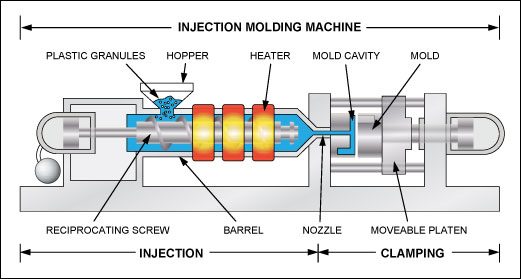
Cooling and Solidification
Once the mold is fully filled, the cooling system circulates water or oil through cooling channels within the mold to reduce the temperature and solidify the material. This process ensures dimensional stability and minimizes product warping.
Ejection and Finishing
After the plastic has completely solidified, the mold opens, and the ejection system (ejector pins or ejector plates) pushes the part out of the mold. The product may then undergo post-processing steps such as trimming excess material, painting, assembly, and quality inspection.
Main Components of an Injection Molding Machine
An injection molding machine is a complex system consisting of two primary units: the Injection Unit and the Clamping Unit, along with various supporting components. Below is a detailed description of its key parts:
1. Hopper
- Function: The hopper stores and feeds raw plastic material (typically in pellet or granule form) into the machine. It is positioned at the top of the injection unit.
- Structure: Usually made of stainless steel or durable plastic, the hopper has a sloped design to allow plastic pellets to flow downwards by gravity.
- Additional Features: Some hoppers are equipped with drying units or flow regulators to control material feed, especially for moisture-sensitive plastics.
2. Heated Barrel & Screw (Barrel & Screw)
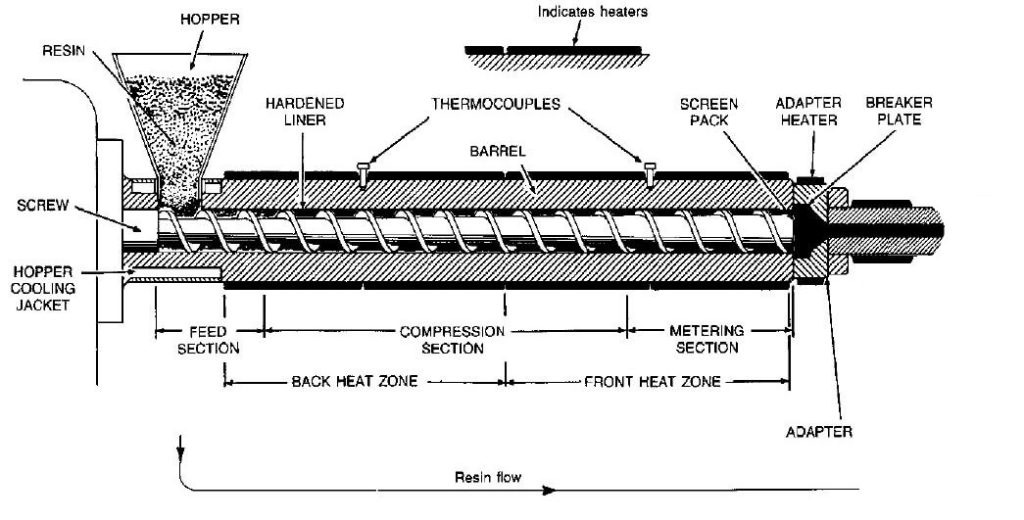
- Function: Melts, mixes, and pushes the plastic toward the nozzle.
- Structure:
- Heated Barrel: Made of high-wear-resistant alloy steel and surrounded by heater bands that maintain a temperature range of 200°C–300°C, depending on the plastic type.
- Screw: Rotates to transport, compress, and mix the plastic, divided into three functional zones:
- Feed Zone: Solid plastic pellets move from the hopper into the barrel.
- Compression Zone: The material melts under heat and pressure.
- Metering Zone: Ensures homogeneous plastic flow, preparing it for injection.
- Operation: The screw rotates using a hydraulic or servo-electric motor, simultaneously retracting to accumulate molten plastic before the injection phase.
3. Nozzle
- Function: Connects to the mold’s runner system, directing molten plastic into the sprue.
- Structure:
- Made of heat-resistant alloy, capable of withstanding high injection pressures.
- Some nozzles feature a shut-off valve to prevent plastic leakage when not injecting.
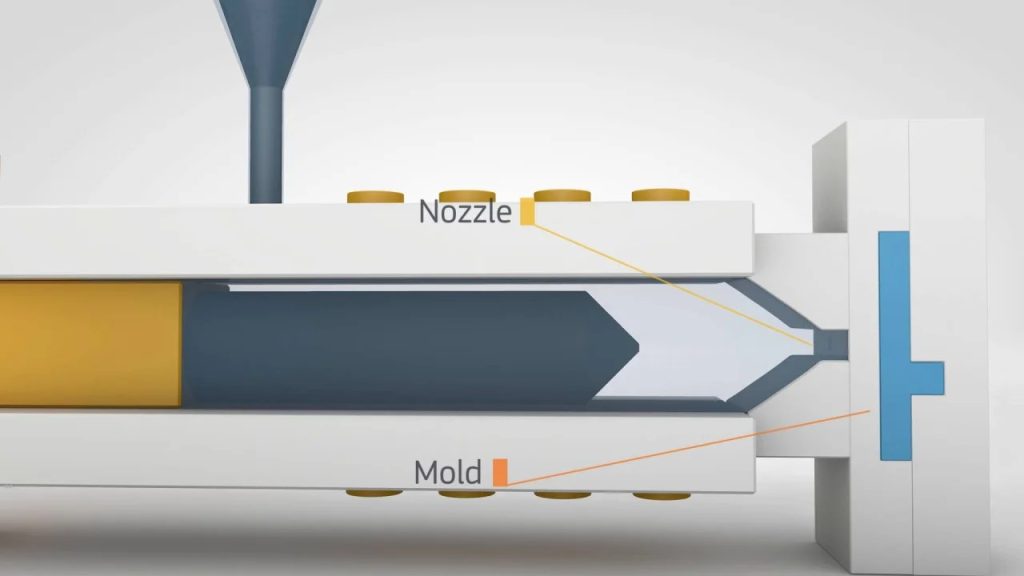
4. Clamping Unit
Clamping Mechanism
- Function: Secures the mold and withstands high injection forces during the molding process.
- Structure:
- Stationary Platen: Holds one half of the mold and is fixed to the injection unit.
- Movable Platen: Holds the other half of the mold and moves to open and close the mold.
- Tie Bars: High-strength alloy steel bars that maintain mold alignment.
Clamping Mechanism Types
- Hydraulic Clamping: Uses hydraulic cylinders to generate clamping force.
- Toggle/Servo Clamping: Uses a toggle lever or servo motor for energy-efficient operation.
Clamping Force
- Calculated based on the mold cavity surface area and injection pressure, ensuring that flash (excess plastic leakage) does not occur.
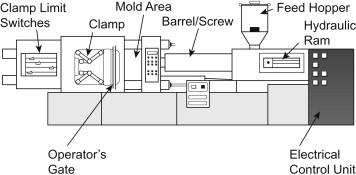
5. Injection Mold
The injection mold is the key factor determining the quality and shape of the final product in injection molding. It is not just a tool but is often regarded as the “heart” of the entire process.
Molds are typically made from steel or aluminum:
- Steel molds offer superior durability, making them ideal for high-volume production, capable of withstanding millions of cycles.
- Aluminum molds are cost-effective and suitable for short-run projects or prototyping, thanks to their lower cost and faster machining time.
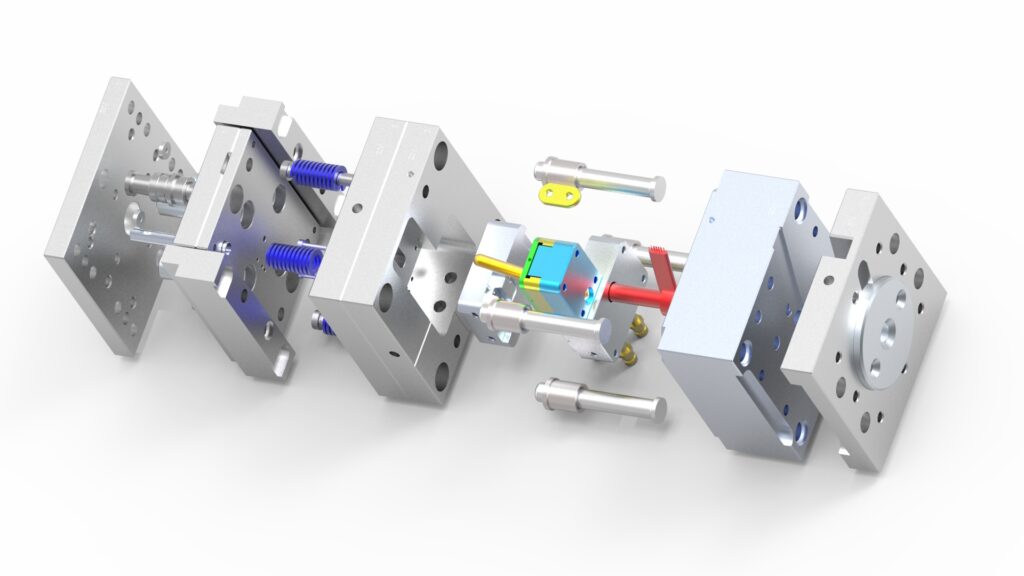
Structure of an Injection Mold
- Cavity & Core: Form the shape of the product based on the desired design.
- Runner System: Channels that direct molten plastic from the nozzle to the mold cavity.
- Gate: The entry point where plastic flows from the runner system into the cavity, impacting surface quality and part finish.
- Cooling Channels: Water or oil-circulating passages that regulate mold temperature, optimizing cycle time.
- Ejector Pins: Mechanisms that push the solidified part out of the mold after cooling.
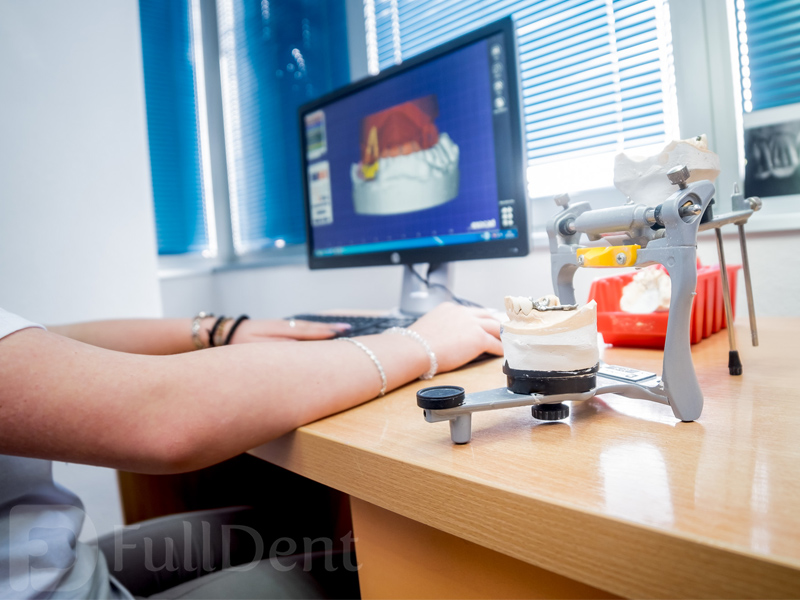
Mold Design and Control System in Injection Molding
Mold design requires high precision, often using CAD/CAM software to simulate plastic flow, optimize structure, and minimize defects such as flash, burn marks (caused by excessive temperature), or warping. The cost of mold production can range from a few million to several hundred million VND, depending on complexity, size, and materials. However, a high-quality mold ensures not only perfect products but also a longer service life, providing long-term economic value.
6. Control System
The control system plays a crucial role in injection molding, ensuring that the production process is accurate, efficient, and results in high-quality products. This system monitors and adjusts technical parameters throughout the injection molding process, from material melting, injection into the mold, cooling, to ejection of the finished product.
6.1 Main Components of the Control System
- Central Controller
Operates based on PLC (Programmable Logic Controller) or industrial computers, allowing for programming and management of the entire injection molding process. Operators can set parameters such as temperature, pressure, cycle time, injection speed, etc. - Sensors
- Temperature Sensors: Measure the temperature of the plastic in the barrel and mold, ensuring the material is in an optimal state.
- Pressure Sensors: Monitor injection pressure and hold pressure to avoid material shortfalls or product deformation.
- Position Sensors: Track the position of the screw or piston in the machine to ensure precise operation adjustments.
- Actuators
This system includes servo or hydraulic motors that control the movement of the screw, mold opening/closing, and ejection of the product. It ensures accurate control over speed and force, maintaining consistent production. - Human-Machine Interface (HMI)
The HMI provides real-time operational data, enabling users to monitor and adjust settings when necessary. It also issues alerts or error notifications to address issues promptly.
6.2 Parameters Managed by the Control System
- Temperature: Ensures consistent flow of plastic, preventing issues like burning or premature solidification.
- Injection Pressure: Controls the speed and force used to inject the plastic into the mold.
- Cycle Time: Includes the injection, hold pressure, cooling, and ejection stages.
- Injection Speed: Affects the mold filling and surface quality of the product.
6.3 Role of the Control System
- Automation: Reduces human error and increases productivity.
- Quality Control: Helps reduce defects like flash, voids, and warping.
- Optimization: Adjusts settings to save materials and energy.
Thanks to modern control systems, injection molding processes not only achieve high efficiency but also ensure consistent and uniform product quality.
7. Drive System
Function: Provides power for the moving parts in the injection molding machine.
Types of Drive Systems:
- Hydraulic System: Uses high-pressure oil pumps, providing large force but consuming more energy.
- Servo Electric System: Energy-efficient, offering higher speeds and greater precision.
- Hybrid System: Combines both hydraulic and electric systems to optimize performance and reduce energy consumption.
Advantages and Disadvantages of Injection Molding Process
Advantages:
- High precision and repeatability, ideal for mass production.
- Capable of producing complex shapes with low tolerance.
- Fast production speed, optimizing manufacturing costs.
- Minimal plastic waste, with the option to recycle excess material.
Disadvantages:
- High mold investment costs, with long mold fabrication times.
- Limited ability to alter product designs after mold completion.
- Requires strict control of technical parameters to ensure product quality.
Interaction Between Components:
- Plastic from the hopper enters the barrel, where it is melted by the rotating screw and pushed through the nozzle.
- The clamping unit holds the mold tightly closed, while molten plastic is injected into the mold cavity under high pressure.
- After cooling, the clamping unit opens the mold, and the ejector pins remove the finished part. The cycle repeats.
This process typically has a cycle time ranging from 8 to 120 seconds, making it ideal for high-volume mass production. The high level of automation reduces errors and optimizes costs, particularly for products with complex designs.
Key Benefits of Injection Molding
Injection molding is favored due to its outstanding advantages, meeting the diverse needs of various industries:
- High production efficiency: With fast cycle times (10-120 seconds), this technology enables the creation of thousands of products per hour, ideal for large-scale production.
- Cost savings: After the initial investment in the mold, the cost per product drops significantly, especially when producing large quantities.
- Flexible design: Capable of producing complex parts, from compact shapes to multi-layer structures with high precision.
- Material diversity: Can use a wide range of plastics, from flexible to rigid materials, depending on product requirements.
- Uniformity: Ensures consistent product size and quality, suitable for applications requiring tight tolerances such as automotive parts or medical devices.
- Environmentally friendly: Excess plastic (such as sprue and runner) can be recycled, minimizing production waste.
Due to these benefits, injection molding has become an essential solution in modern manufacturing.
Common Materials Used in Injection Molding
Plastic materials are a key factor in determining the properties and applications of the product. Below are some commonly used thermoplastics:
- Polypropylene (PP): Excellent chemical resistance, flexible, used in food packaging, automotive parts, and household items.
- ABS (Acrylonitrile Butadiene Styrene): Tough, impact-resistant, widely used in electronics housings, toys, and automotive parts.
- Nylon (Polyamide): Durable, abrasion-resistant, suitable for gears, bearings, and mechanical components.
- HDPE (High-Density Polyethylene): Moisture-resistant, cost-effective, used for bottles, containers, and pipes.
- Polycarbonate (PC): Transparent, strong, used in safety goggles, bulletproof windows, and medical devices.
- Polystyrene (PS): Lightweight, rigid, used for packaging, insulation, and disposable items.
- PVC (Polyvinyl Chloride): Versatile, inexpensive, used for pipes, flooring, and electrical cables.
- PET (Polyethylene Terephthalate): Transparent, durable, commonly used for water bottles and food containers.
- Acetal (POM): Rigid, low friction, used for technical parts like gears and zippers.
Each plastic type has its own unique properties, selected based on the specific requirements of the product to optimize performance and cost efficiency.
Practical Applications of Injection Molding
1. Automotive Industry
- Interior Components: Dashboard panels, door handles, buttons, trim panels.
- Exterior Components: Bumpers, grilles, side mirror housings, headlamps.
- Mechanical Components: Engine covers, fuel lines, seals, couplings.
Injection molding is widely used in the automotive industry to produce high-precision, durable parts that are essential for both the functionality and aesthetics of vehicles.
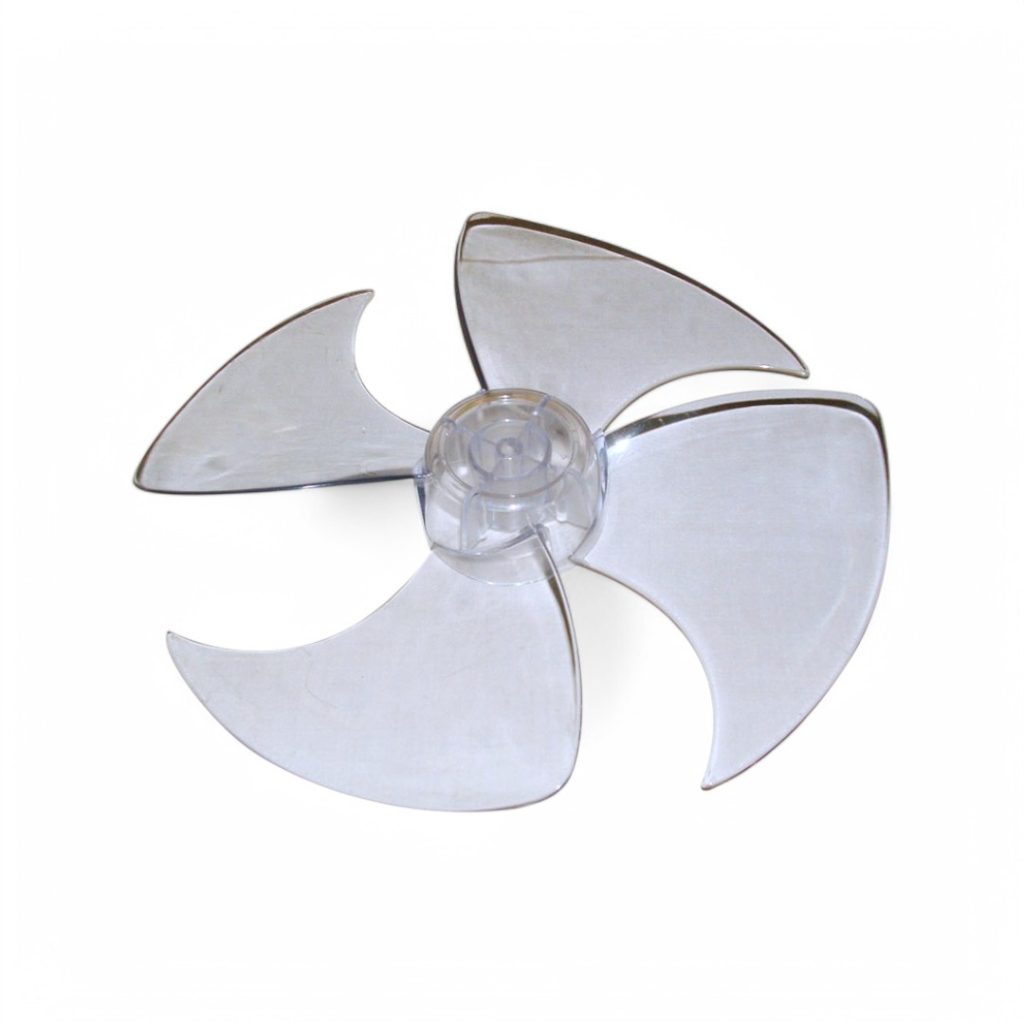 |
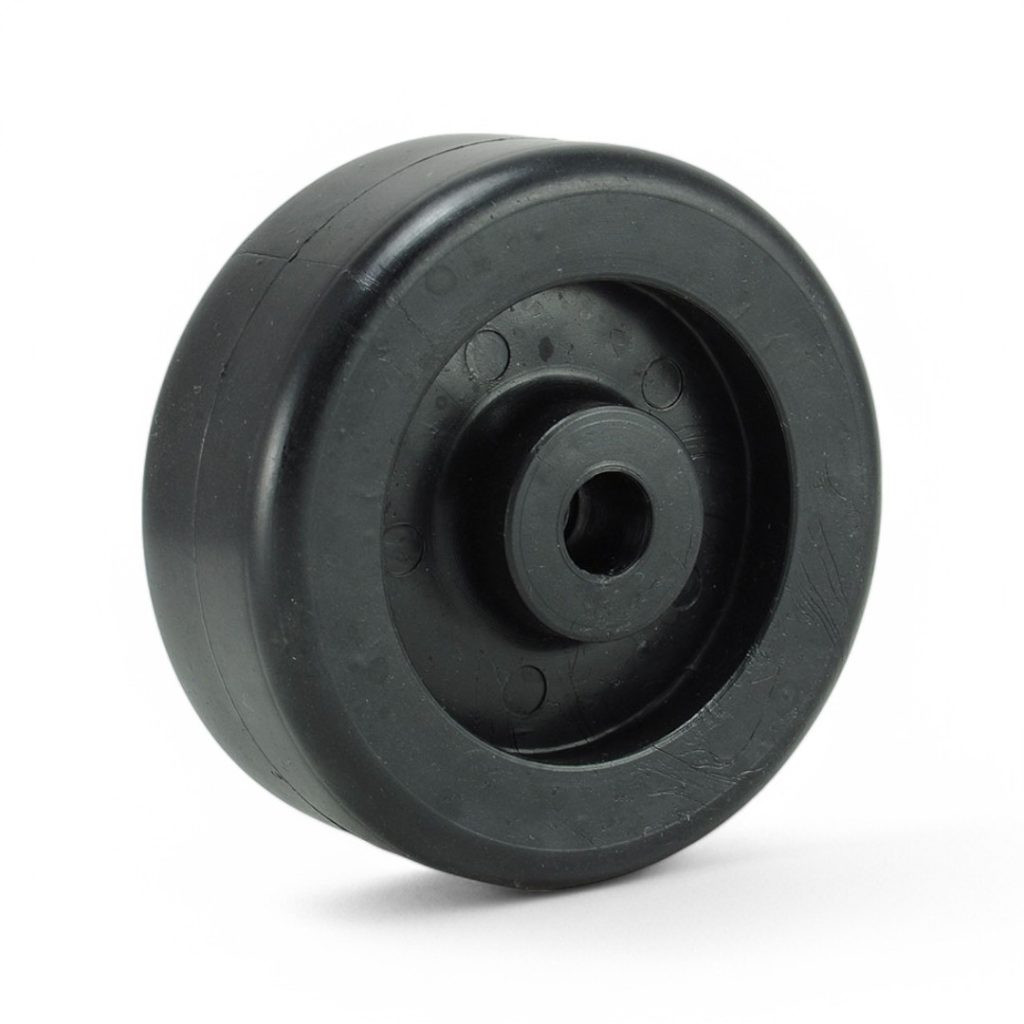 |
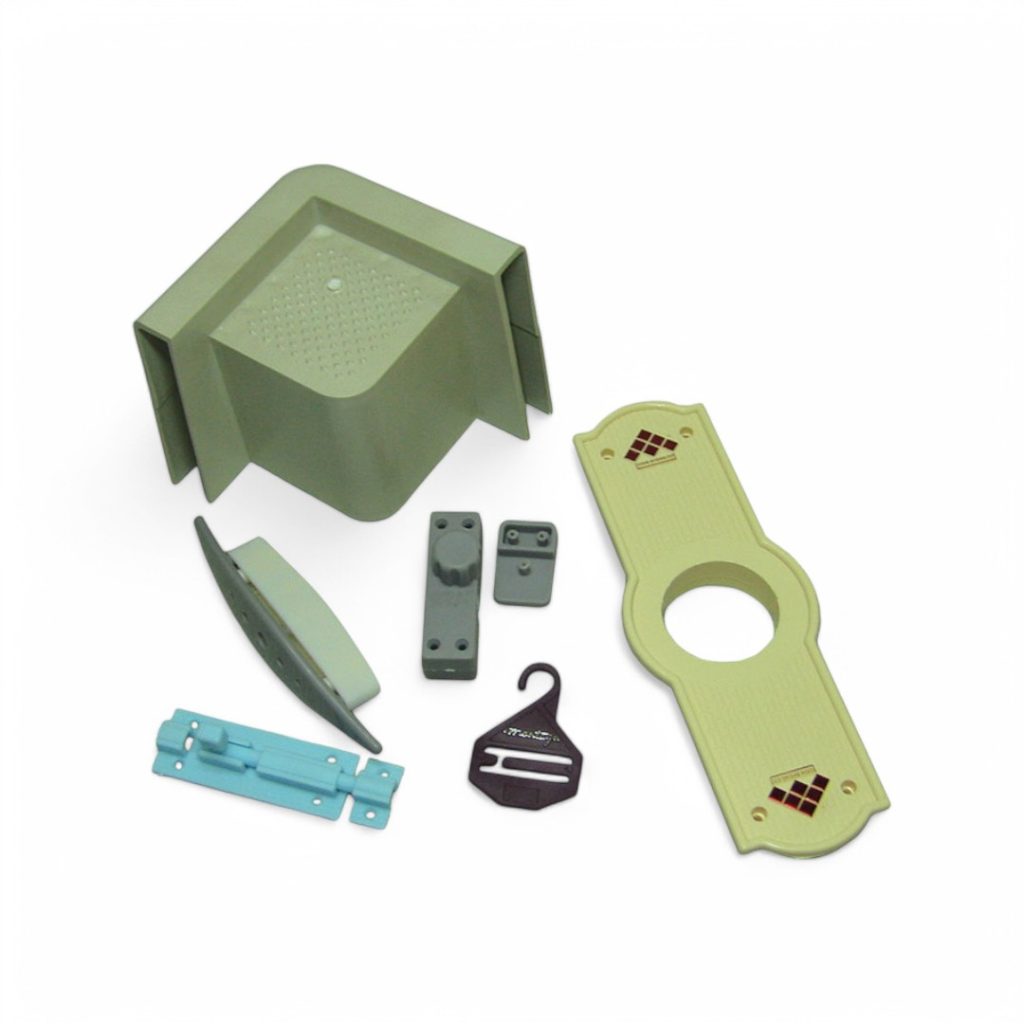 |
2. Consumer Goods Industry
- Household Appliances: Blender housings, vacuum cleaner bodies, irons, microwave parts.
- Toys: Model kit components, dolls, toy cars.
- Packaging: Bottle caps, food containers, plastic trays.
Injection molding plays a crucial role in producing everyday items with intricate designs, durability, and cost-effectiveness, especially in the household, toy, and packaging sectors.
3. Healthcare Industry
- Single-use Devices: Syringes, blood collection tubes, medical instrument trays.
- Durable Devices: Blood pressure monitor casings, ultrasound machine bodies, hearing aid shells.
- Implants or Accessories: Small components for prosthetics, orthotic tools.
4. Electronics Industry
- Enclosures: Mobile phone cases, laptop housings, computer mouse shells, keyboards, remote controls.
- Internal Components: Circuit board mounts, connectors, battery enclosures.
5. Construction Industry
- Plumbing Accessories: PVC pipes, connectors, valves, rubber-plastic seals.
- Decorative Materials: Door handles, plastic moldings, wall panels.
6. Packaging Industry
- Bottles and Jars: Plastic water bottles, cosmetic jars, pill bottles.
- Caps and Accessories: Screw caps, flip-top caps, tamper-proof seals.
7. Sports and Recreation Industry
- Sports Equipment: Helmet shells, racket grips, skate wheels.
- Outdoor Gear: Flashlight housings, outdoor water bottles, folding plastic chairs.
8. Agriculture Industry
- Irrigation Systems: Sprinkler heads, control valves, drip irrigation tubes.
- Tools: Shovel handles, garden tools, fertilizer containers.
Injection molding is essential in these diverse industries, providing durable, cost-effective solutions for a wide variety of products.
Tashing Company – Manufacturing Plastic Products Using Customized Injection Molding Technology
Among the companies operating in the plastic injection molding industry in Vietnam, Tashing stands out with over 40 years of experience and a solid reputation. Established in the 1980s in Ho Chi Minh City, Tashing started as a flexible packaging and plastic manufacturing facility and gradually developed into one of the most trusted suppliers for both domestic and international markets.
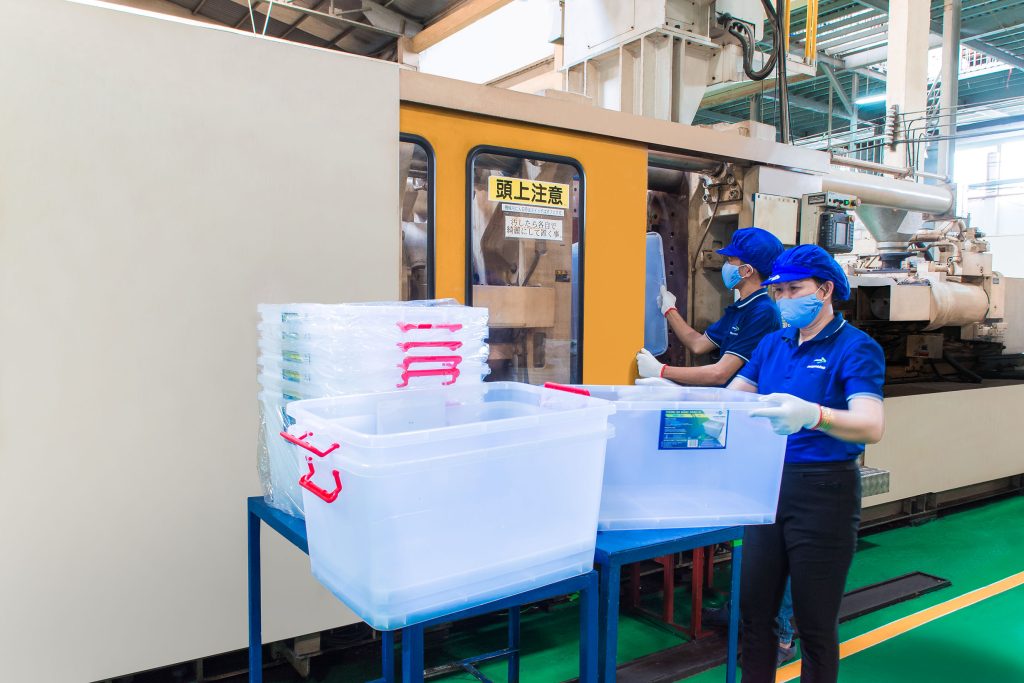
Tashing Company has a factory located at 62G An Duong Vuong, Ward 16, District 8, Ho Chi Minh City. With a highly skilled workforce, the company continually invests in modern machinery and advanced technology to ensure its products meet stringent standards. Tashing’s quality management system is continuously improved, combined with a commitment to using environmentally friendly materials and eliminating harmful chemicals, helping the company build trust with its customers.
Diverse Products of Tashing
Tashing specializes in manufacturing a wide range of plastic products to serve both household and industrial needs. Notable products in the company’s portfolio include:
- Industrial Equipment: Precision plastic parts for machinery, automotive components, and electronic devices that meet high technical standards.
- Plastic Bins and Multi-purpose Containers: Designed to be sturdy, suitable for storage in warehouses, transportation, or household use.
- Household Products: Including plastic trays, food containers, kitchen utensils, and many other practical items, ensuring safety and durability.
- Plastic Packaging: Such as HDPE bags, PP bags, and medical plastic bags, serving the food, healthcare, and retail industries.
All Tashing products undergo strict quality control from design to production, combined with competitive pricing and fast delivery services. This has helped the company become a trusted partner for many domestic and international businesses.
Conclusion
Injection molding is not just a technological advancement but also the foundation for the development of many modern industries. From its long history, optimized processes, to the crucial role of molds and its outstanding benefits, this technology has proven its value through numerous practical applications. Tashing Company, with its experience and continuous innovation, is a living testament to the growth of the injection molding industry in Vietnam. If you are looking for high-quality plastic manufacturing solutions, from multi-purpose containers, industrial parts to household products, Tashing is definitely a name to consider.
Di Dai Hung Co., Ltd.
Address: 462 & 466 Hong Bang, Ward 16, District 11, Ho Chi Minh City
Phone: 028 3960 5688 – 028 3960 5800
Facebook: Công ty TNHH Di Đại Hưng

